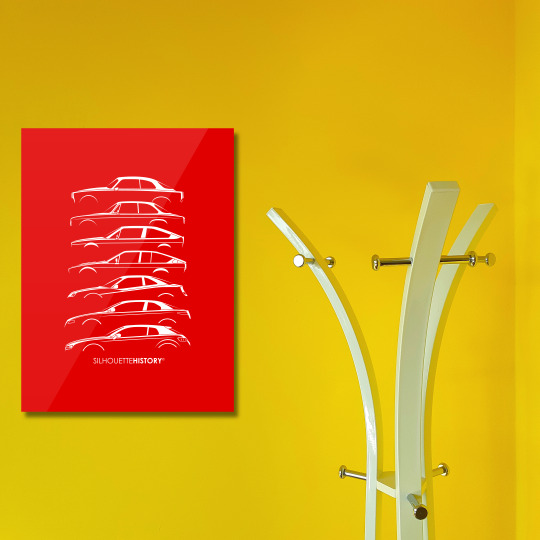#gtv
Text

Celica GTV @ Boso Hanto
86 notes
·
View notes
Text
#talkin#tik tok#abbot elementary#lisa ann walter#quinta brunson#tyler james williams#chris perfetti#sheryl lee ralph#janelle james#william stanford davis#gtv
251 notes
·
View notes
Text

362 notes
·
View notes
Text





Alfa Romeo GTV-6 Widebody
67 notes
·
View notes
Photo

We miss Japan. 💕 Golden Hour Vibes captured by @n.yusaku and his beautiful #AE86 #Corolla #SprinterTrueno #GTV with our #Renown #Monaco Dark Leather steering wheel. 🤘 #4AG #JDM #Hachiroku #86 www.renownusa.com (at Renownusa.com San Francisco) https://www.instagram.com/p/CrKumnqOZDF/?igshid=NGJjMDIxMWI=
63 notes
·
View notes
Text








1977 Alfa Romeo Alfetta GTV 5-Speed
#alfa romeo#Alffeta#GTV#alfa romeo gtv#Alfaholics#car photography#car porn#Giorgetto Giugiaro#italdesign
17 notes
·
View notes
Text

Lombard Coupe SilhouetteHistory
Silhouettes of Alfa Romeo coupes including Giulietta Sprint, Giulia Sprint GT Veloce, Alfasud Sprint, Alfetta GTV6, GTV, GT, Brera
Home | Posters | Special Tees | Facebook | Instagram
#silhouettehistory#alfa romeo#alfa romeo gtv#alfa romeo giulietta#alfa romeo giulia#giulia#gtv#brera#alfa romeo brera#alfasud#alfaromeo alfasud#alfa romeo alfasud sprint#sprint#alfa romeo gt#gt#italian car#coupe#car#silhouette#history
9 notes
·
View notes
Photo




Alfa Romeo GTV
42 notes
·
View notes
Photo

Toyota Corolla @ 246
258 notes
·
View notes
Photo

Neat little #alfaromeo #gtv hauling ass near Lathrop (at Dell'Osso Family Farm) https://www.instagram.com/p/Cp8YUWhP0mz/?igshid=NGJjMDIxMWI=
23 notes
·
View notes
Photo

Alfa Romeo 2000 GTV
昔のアルファに付いている四つ葉のクローバーが可愛いので撮影。
1920年代、シチリア島・タルガ・フローリオでの厳しい山岳レースで初優勝を飾ったアルファロメオのボディに描かれていたのは可愛らしいクアドリフォリオ ヴェルデ(四つ葉のクローバー)でした。
ヒトラー統治下のニュルブリンクでおこなわれたドイツグランプリでもメルセデスベンツ「W25」との接戦の末、アルファロメオ「P3」が優勝。
以来、勝利の象徴としてアルファの車に描かれることになります。
ちなみに、この時代のアルファロメオ・レース部門の責任者はなんと、後にフェラーリ社を立ち上げるエンツォ・フェラーリが担当していました。
57 notes
·
View notes
Text
Blatantly Partisan Party Reviews: 2022 Victorian State Edition
Victoria goes to the polls on 26 November and there is a record number of candidates for both houses of the state parliament, so here I am to review the assortment of micro-parties crowding the ballot.
I reviewed the 2014 and 2018 state elections, and although I no longer live in Victoria, I think of Melbourne as home and some of this year’s micros are truly cooked, so I could not resist firing up the blog.
There is another reason I am keen to write these reviews. Victoria still uses anti-democratic Group Ticket Voting (GTV) above the line for the Legislative Council (upper house). To ensure your preferences go where you want them to go, you must vote below the line.
What is Group Ticket Voting? It is where a party registers its list of preferences—their “group ticket”. If you vote above the line on the big Legislative Council ballot, your preferences are distributed as per the group ticket of the party for which you voted 1. Unlike when voting for the Senate, any other preferences you mark above the line will be ignored.
This does not, and cannot, represent the will of voters. GTV means that 100% of preferences flow in the same direction; in reality, when people distribute their own preferences, even the most disciplined and organised campaign struggles to get more than 80% of voters for one party to nominate the same second preference, never mind third or subsequent preferences. GTV turns each election for the upper house into a lottery, and it doesn’t confer much long-term benefit upon the micro-parties that it elects either because, even if they gain supporters during their term, they find it very difficult to draw a winning ticket two elections in a row.
Moreover, few parties submit GTVs that are based on ideology alone and can be assumed to reflect the typical preferences of their voters. Most parties do deals with each other for favourable preferences. A party that arranges especially good deals can snag preferences from voters across the spectrum—almost all of whom do not know their preference is going there, nor would approve of it. This allows a party to snowball their way past rivals with much greater support to win a seat. A party with, say, 9% of the vote in one region can miss out on a seat to a party with only 2% because that latter party harvested preferences effectively. If you want to read more about this abysmal system, Antony Green and Ben Raue have both gone into detail. Victoria's GTVs were released yesterday, and Ben has written a piece today explaining the general trends that emerge from them.
At federal level, and in every other state, GTV has been abolished and better systems implemented that give voters control over their preferences. Every federal election since 2016 has been run under a system where voters specify their own preferences above the line. Western Australia ran the most recent state election with GTVs: last year, the Daylight Saving Party won a Legislative Council seat for Mining & Pastoral despite polling a grand total of 98 primary votes in that region. This absurdity prompted WA to abolish the system. Victoria’s parliament, however, has clung to GTV despite having plenty of opportunity for reform. This failure should shame the parliament and its politicians—and Kevin Bonham is doing his best to do so in his summary of party policies about GTV.
There is a simple way to avoid your preferences going on a magical mystery tour and potentially electing parties you dislike: VOTE BELOW THE LINE. This is extremely easy: you just need to give at least 5 preferences to individuals below the line. Any vote with fewer preferences below the line is not counted; you must preference at least 1–5. You can then give as many more preferences as you want. If you only want to give 5, give 5. If you want to preference everybody, preference everybody. It is entirely up to you and your vote will only go to the individuals to whom you allocate preferences, in the order you allocated them. Do not repeat or skip a number. If you stop preferencing at any point after 5, your vote exhausts at that point and plays no further part in the election. I encourage you to preference as far as possible because it maximises the power of your vote.
Group Ticket Voting only applies for the Legislative Council (the upper house, which is the house of review) on its big ballot with the thick line. There is no Group Ticket Voting for the Legislative Assembly (the lower house, where government is formed), and when voting for the Assembly you must number all squares without repeating or skipping a number.
My first reviews will be posted later today. They reflect my own biases as a green democratic socialist. I am not, nor have I ever been, a member of any political party. As per usual, I will not review Labor, the Liberal/National coalition, or the Greens, because the sort of person interested in these reviews likely already has established opinions about those parties. I don’t review One Nation federally but I might tack them on at the end this year if I have the time. I am aiming to review every other party. Let’s go!
Every review will end with my recommendation of how favourably to preference a party. This is the recommendation system I will be using:
Good preference: a party with a positive overall platform that has few or no significant flaws for the left-wing voter.
Decent preference: a party with a generally positive overall platform but some reservations; or, a single-issue party with a good objective but by definition too limited in their scope to encompass the fullness of parliamentary business.
Middling preference: a party with a balance of positive and negative qualities, or a party with a decent platform undermined by a notably terrible policy or characteristic.
Weak or no preference: a party with more negatives than positives. In the Legislative Assembly, you must number all squares, and these parties should receive as bad a preference as possible. In the Legislative Council, you should vote below the line and either give this party a poor preference or let your vote exhaust before reaching it. I recommend preferencing fully, but you may wish to stop rather than express preferences between varying gradations of undesirability.
This schema is flexible; I may, for instance, suggest a “middling to decent preference”.
#auspol#vicvotes#vicvotes22#vicvotes2022#springst#Victorian election#Victoria#Election 2022#Melbourne#voting#vote below the line#below the line#above the line#group ticket voting#group voting tickets#gtv#gvt
18 notes
·
View notes
Text

Monza streets
(Photo courtesy by T124.com community)
97 notes
·
View notes


